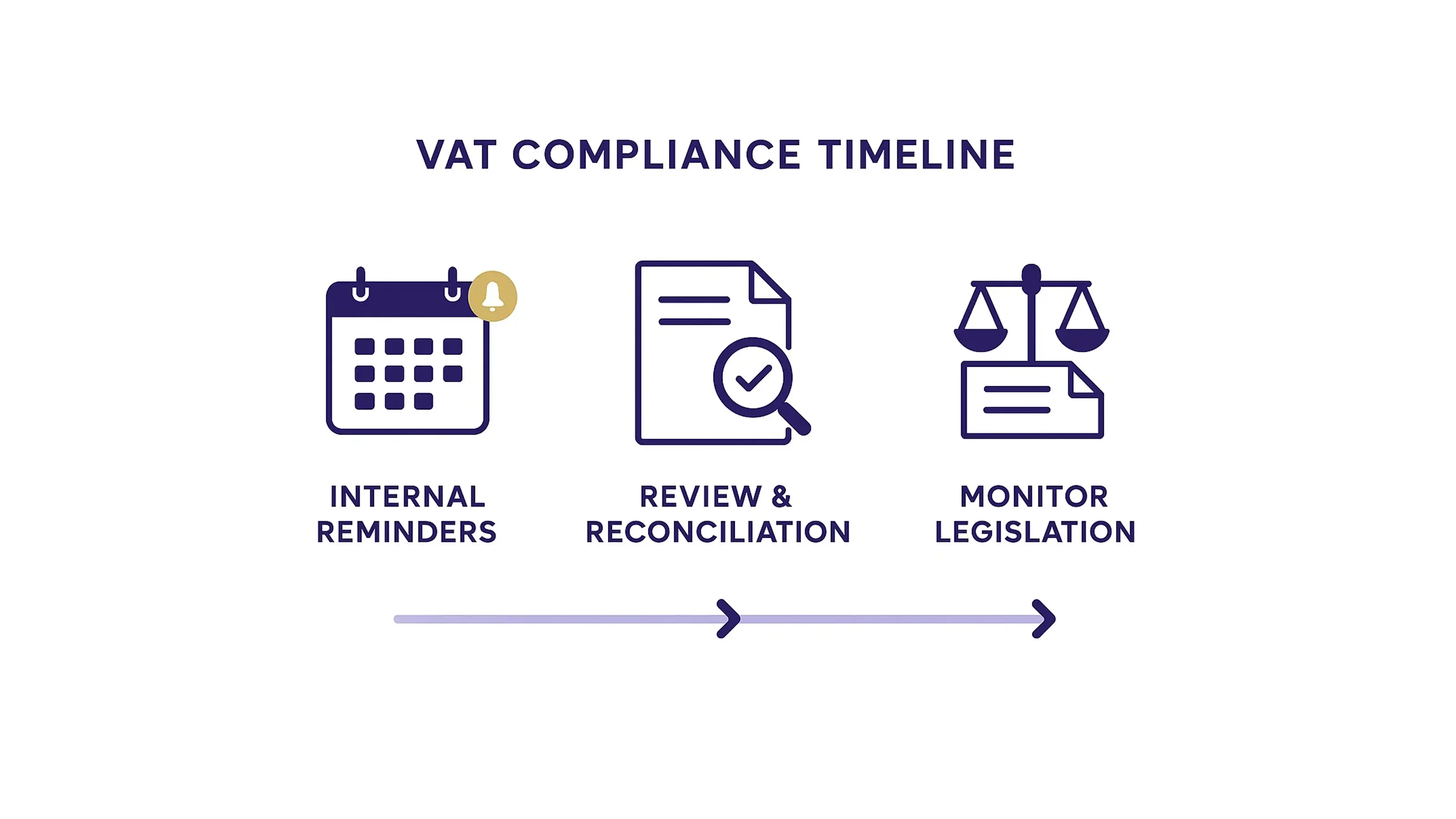Why Filing a VAT Return Matters More Than You Think
For many UK businesses, filing is just another quarterly task – until cash flow tightens or refund cycles slow down. Choosing to submit monthly isn’t just a compliance requirement; it can also be a strategic financial decision. Companies with high input VAT, frequent refunds, or international operations may benefit from faster recovery of funds and more accurate financial forecasting. Before you decide, let’s break down how to file monthly VAT returns – and how to make it work efficiently for your team.
Step 1: Understand the Basics of Monthly VAT Return Filing
According to HMRC data, in a six-month reference period approximately 358,809 businesses filed - that is about 9% of all VAT‑registered businesses - and collectively these returned reports represented around £846 billion in turnover, making up approximately 22% of total VAT‑registered turnover.
- Filing is quicker to process and can help you reclaim VAT every month.
- It can also give your finance team a more precise month-to-month cash flow overview. And with the ongoing advance of Tax Technology Tools – VAT Compliance Automation, you can further streamline your VAT administration.
Why Monthly Returns Might Be Right for You
Being a “regular repayment trader” is a common reason to adjust your filing frequency. If your outgoings usually exceed your sales, more frequent submissions can accelerate refunds. This approach is particularly useful for companies in growth phases or those with large input costs. It is also relevant for CFOs seeking tighter control of VAT liabilities without waiting a full quarter between refunds.
Step 2: Confirm Your Registration Requirements
Before you move forward with filing, check your eligibility. Here’s what to consider:
- Check the UK Office for National Statistics data on monthly returns for a snapshot of how many businesses file and whether you fit this profile.
- Review your current VAT registration details with HMRC. If you are not registered, accomplish that step first.
- Make a note of your annual turnover. The HMRC Annual VAT Statistics 2023–24 point to a VAT population of 2,178,950, so be sure your business is accurately recorded.
Double-Check Your Timeline
HMRC requires timely filing and payment for businesses on a monthly plan. Automatic systems monitor compliance and late returns. Missing deadlines can trigger penalties and possible scrutiny, so be sure your internal calendar is set up correctly.
Step 3: Gather Documentation and Data
Key Areas to Focus On When Preparing a return:
Sales Data Management
- Separate UK sales from exports.
- Keep consistent records to track monthly figures easily.
- Refer to HMRC’s VAT guidance for proper treatment of domestic vs. international sales.
Purchases & Input VAT
- Accurately log VAT on all business-related purchases.
- Track import VAT and reverse charge mechanisms where applicable.
VAT-Compliant Software
Team Access & Controls
- Ensure the right team members have access to review and submit returns.
Be Prepared for HMRC Risk Checks
Step 4: Complete Each Month’s Return
Filing requires consistent routines. Here’s a recommended checklist:
- Update all sales invoicing systems and expense logs promptly.
- Calculate your VAT due or VAT refund total.
- Include any adjustments for bad debt relief, partial exemptions, or import VAT.
Timing Matters
Online VAT filing is now standard across most EU countries, with many adopting real-time digital reporting as part of VAT reform efforts European Commission – VAT in the Digital Age. Plan for this in your workflow, and always file before the HMRC‑dictated deadline.
Step 5: Arrange Payment or Reclaim
Once you finalize the filing, you must handle the financial side immediately.
- If Money Is Due: In the UK, CFOs often use the Faster Payments Service, BACS, CHAPS, or direct debit for regular VAT payments. Refer to HMRC’s official guidance to ensure you have the correct account details and reference numbers. Keep digital or email confirmations showing that each transaction has gone through. This helps establish a trail of proof in case of any payment disputes.
- If a Refund Is Due: Ensure your bank details are up to date with HMRC, including any recently changed sort codes or account numbers.Monitor your account closely to confirm that the refunded amount matches your records. As part of due diligence, keep a record of all communications with HMRC and verify with your accounting software that the refund aligns with your VAT calculations. For a practical guide to the process, see EU VAT Refund – Practical Guidelines.
The Core Steps for VAT Returns
To file a VAT return, a business calculates the total VAT on sales and purchases for the reporting period, then submits this figure - along with the corresponding payment or refund request - to HMRC before the stated deadline. Consistent record-keeping is crucial for accuracy and compliance.

Step 6: Track Ongoing Compliance
Filing doesn’t end once you hit “submit.” Staying on top of your obligations requires a clear system:
Internal Reminders
- Automate your calendar so you never miss monthly cutoffs.
- Set up email alerts for upcoming deadlines.
Review and Reconciliation
- Compare your actual transactional data to your submitted figures.
- Investigate any discrepancies right away, since unresolved errors might trigger issues later.
Monitor Shifting Legislation
- HMRC’s guidelines on tax thresholds and reporting sometimes change.
- Pay attention to public releases, such as the HMRC Annual VAT Statistics 2023–24, which note £168 billion in VAT receipts.
Step 7: Leverage Monthly Reporting for Business Insights
Though filing requires careful data tracking, it also provides valuable snapshots of your business activity. CFOs and accounting managers can use these insights to:
Forecast Cash Flow
- Compare monthly gross sales to expenses to identify emerging trends faster. For instance, if you notice a consistent uptick in input VAT, you might evaluate supplier costs or consider adjusting prices if expenditures seem too high.
Fine‑Tune Pricing or Spending
- Higher‑than‑expected VAT bills may indicate overspending or missed cost‑saving opportunities. By examining monthly summaries, your team can pinpoint inefficiencies - like excessive inventory - and respond quickly.
Assess Growth Readiness
- If you’re expanding or exploring new markets, monthly returns help you detect changes in revenue almost in real time. For example, a sudden spike in sales volumes could validate new product lines and guide further investment.
- The UK Office for National Statistics cites how monthly VAT data can refine GDP measurement; similarly, your finance team can weigh month‑by‑month VAT data to improve operational forecasts.
Conclusion
VAT returns can provide a faster route to refunds, clearer insights, and tighter cash flow management. By making submissions part of your regular accounting schedule, you’ll keep your business in good standing with HMRC and maintain a clear view of your finances. Consistency and accuracy are what matter most – and they’re within easy reach when you plan ahead, put the right systems in place, and understand how to file monthly VAT returns effectively.


